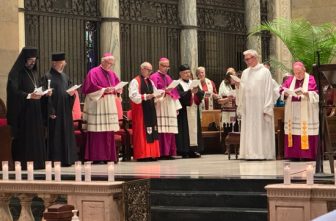In “Humanae Vitae,” Blessed Paul VI addressed “recourse to infertile periods,” or married couples avoiding the possibility of conception by restricting intercourse to the infertile phase of the wife’s natural cycle.
“If … there are well-grounded reasons for spacing births, arising from the physical or psychological condition of husband or wife, or from external circumstances, the Church teaches that married people may then take advantage of the natural cycles immanent in the reproductive system and engage in marital intercourse only during those times that are infertile, thus controlling birth in a way which does not in the least offend the moral principles [outlined earlier in the document],” he wrote.
Known as natural family planning or NFP, this use of knowledge of the wife’s fertility cycles to avoid — or achieve — pregnancy has been found to be highly effective and continues to be scientifically studied. It is practiced through several slightly differing “methods” — such as the sympto-thermal model or Creighton Model — which rely on a woman’s biological fertility indicators, which couples chart to identify regular patterns in her fertility cycle. For many couples, advances in technology, including phone apps and “wearables” such as Tempdrop, have increased the ease of identifying and charting these indicators.
Behind the science and technology, however, are always two people who are discerning together whether or how they should practice NFP, what constitutes their “well-grounded reasons,” and how “being open to life” affects their trust in God and his love and care for them — and their family. While acknowledging that using NFP is not always easy and involves significant sacrifices at times, many couples say NFP is a lifestyle, and it profoundly affects their view of human sexuality, God’s generosity and the inherent gift of children.
The Catholic Spirit asked eight couples from around the Archdiocese of St. Paul and Minneapolis who use NFP to describe their journey. The stories were written by Bridget Ryder. Couples provided their photos.
— The Catholic Spirit
‘Humanae Vitae’ on ‘responsible parenthood’
“Married love, therefore, requires of husband and wife the full awareness of their obligations in the matter of responsible parenthood, which today, rightly enough, is much insisted upon, but which at the same time should be rightly understood. Thus, we do well to consider responsible parenthood in the light of its varied legitimate and interrelated aspects.
“With regard to the biological processes, responsible parenthood means an awareness of, and respect for, their proper functions. In the procreative faculty the human mind discerns biological laws that apply to the human person.
“With regard to man’s innate drives and emotions, responsible parenthood means that man’s reason and will must exert control over them.
“With regard to physical, economic, psychological and social conditions, responsible parenthood is exercised by those who prudently and generously decide to have more children, and by those who, for serious reasons and with due respect to moral precepts, decide not to have additional children for either a certain or an indefinite period of time.
“Responsible parenthood, as we use the term here, has one further essential aspect of paramount importance. It concerns the objective moral order which was established by God, and of which a right conscience is the true interpreter. In a word, the exercise of responsible parenthood requires that husband and wife, keeping a right order of priorities, recognize their own duties toward God, themselves, their families and human society.
“From this it follows that they are not free to act as they choose in the service of transmitting life, as if it were wholly up to them to decide what is the right course to follow. On the contrary, they are bound to ensure that what they do corresponds to the will of God the Creator. The very nature of marriage and its use makes his will clear, while the constant teaching of the Church spells it out.”
— “Humanae Vitae,” 9-10
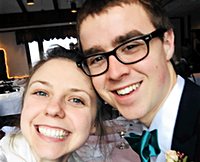 Feels like teamwork
Feels like teamwork
It was just two weeks before her wedding, and Shawna Wicker was in a panic about natural family planning. She and her now husband, Isaac Wicker, needed to learn how to practice it.
They knew they didn’t want to use contraception, but they wanted to wait to have children since they were both planning on attending graduate school. Luckily, they found a family friend who taught the Creighton Model FertilityCare System.
“It was clear she cared a lot about our relationship,” Shawna said.
She not only taught them the ins-and-outs of tracking the body’s fertility indicators, but she also helped them look at the health of their relationship and use NFP to strengthen their marriage. Now every night Isaac tracks Shawna’s fertility signs on the chart that hangs in their closet.
“It feels like such teamwork,” Shawna said.
Practicing NFP has also brought an intense intentionality to the 26-year-olds’ relationship, they said.
“Communication and decision making has been core to practicing NFP,” Isaac said. “We have to look at our lives and relationship in the whole picture because it affects our future.”
For the first couple years of their marriage, they avoided pregnancy. They discovered that periods of sexual abstinence were difficult, but they didn’t negatively affect their relationship. On the contrary, the spouses learned to love each other in other ways.
“It was never a hindrance to our relationship,” Shawna said of NFP. “It was something that we were in together and it helped us to be more intentional about our future and our plans.”
Since they’ve decided they wanted to try to conceive, NFP has also helped them work through health challenges. After nine months without a positive pregnancy test, Shawna took her fertility chart to a physician trained in NaPro Technology, which is based on the science that informs the Creighton NFP model. The physician immediately diagnosed endometriosis, a disease where cells from the uterine lining grow outside the uterus and can cause infertility. Through surgery last spring, the diagnosis was confirmed and the disease removed.
The couple were parishioners at St. Lawrence Catholic Church and Newman Center in Minneapolis before they moved to Illinois last August for Isaac to attend graduate school. They plan to return to the Twin Cities when he graduates.
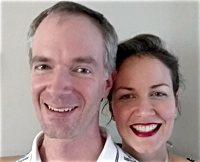 Charting for health
Charting for health
Renee and Matthew Oakes hoped for a large family when they got married 16 years ago, but health and fertility issues made it difficult for them to conceive. Thanks to medical interventions based in the science and research related to natural family planning, the parishioners of St. Michael in Stillwater have three children, ages 14, 9 and 3.
“If you can get your health back, it’s worth it,” Renee said. “We were lucky to [even] get two babies out of it.”
Since adolescence, Renee, 39, had struggled with multiple, seemingly unsolvable, health issues. With the help of a local physician trained in NaPro Technology, a system of medical interventions for fertility and women’s health based on the Creighton Model of NFP, she achieved her first pregnancy two years into their marriage. Then they went three years without conceiving followed by three consecutive miscarriages.
“The periods when I thought we would never conceive were soul crushing,” Renee said.
Her local doctor referred her to Dr. Thomas Hilgers at the Pope Paul VI Institute for the Study of Human Reproduction in Omaha, Nebraska, who developed NaPro Technology. He took one look at her NFP charts and started to discern the health issues that had made her both constantly fatigued and infertile. Testing confirmed that she had Hashimotos, an autoimmune disorder that affects the thyroid. Hilgers also suspected endometriosis, a disease where cells like those from the lining of the uterus grow outside the uterus, a condition that can be very painful and cause infertility.
In 2007, Renee underwent a surgery that removed the disease. Meanwhile, diagnosing and treating her thyroid condition not only improved her fertility but also her overall health. She regained her energy after years of suffering from chronic fatigue.
“It’s very revealing how much of a difference a doctor like Hilgers can make,” said Matthew, 42.
“I know for sure we wouldn’t have the kids without NFP.”
In the midst of addressing Renee’s health problems, they also discovered that Matthew had low fertility. For him, Hilgers recommended supplements. Through their fertility struggles, they say using NFP has also brought them closer together as a couple and improved their communication.
Renee admits that she gets tired of constantly charting her biological fertility indicators, but it’s necessary for monitoring her health and getting the right interventions in place as soon as she becomes pregnant. Because of her experience, Renee is now helping other women and couples as a Creighton model NFP instructor.
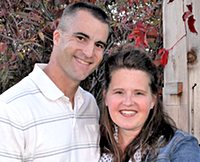 One child at a time
One child at a time
When Teresa and Robert Donette married 19 years ago, they initially struggled to conceive.
“When we really had to dial in and figure out Teresa’s fertile times, natural family planning was a gift to understand how the body works,” Robert said. “By the grace of God, things went right.”
Robert, 45, had learned about NFP from the family of a childhood friend. What he saw in his friend’s family contrasted strongly with his own home.
“I grew up in a nominally Catholic home and watched my parents’ marriage dissolve,” he said.
Though he can’t attribute the happiness of his friend’s home entirely to NFP, as he later learned about the low divorce rates among couples who use NFP and the health risks associated with artificial contraception, he knew he wanted to practice NFP in his own future marriage. Robert introduced Teresa to NFP, and she was happy to go on the adventure with him.
The parishioners of St. Timothy in Maple Lake now have 10 children, ages 5 months to 16.
The large family is not something they planned, but they consider it a gift. After the birth of their third child, the couple thought they might not have any more children. Teresa, now 42, had been diagnosed with a condition that caused antibodies to form during pregnancy that would attack the developing child. Despite the diagnosis, every subsequent pregnancy went smoothly.
“We kept taking it one child at a time, and we’ve gotten to 10,” she said.
As their family has grown, the Donettes have taken joy in seeing the unique personality of each child. They admit that having a large family comes with sacrifices, both for themselves and their children. Their children cannot play every sport or participate in every school activity they’d like, and they have to lend a hand with household chores, including the mountain of laundry that a large household generates. But as Teresa and Robert witness to them the joy that openness to life brings and the value of work and family, their children have happily embraced those values, too, the couple said.
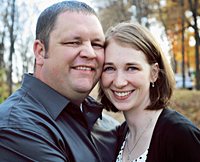 Taking a different path
Taking a different path
Luke Carlson has learned that “when you make plans, God laughs.” He and his wife, Kristin, started their marriage 10 years ago practicing natural family planning because they wanted to be open to life and to God’s plan for their marriage. Initially, their plan and God’s plan seemed to coincide perfectly.
“Our first two pregnancies felt very planned. We felt very ready. Our other two pregnancies have been unplanned and it was shocking,” Kristin said. “It wasn’t a low, but it took us down a different path.”
When her youngest was born a year ago, they had to make major adjustments in their lives. Kristin, 36, left her career as a dietician to care full time for their children, and Luke, 35, took extra jobs in addition to his full-time work as a teacher to make up for the lost income. Kristin felt guilty for not helping provide for the family economically, but Luke reassured her.
“He always told me, ‘We’re in this together,’” she said.
Kristin also had to go through a “learning curve” in her transition away from her career. Meeting other “stay-at-home-moms” at their parish, Annunciation in Minneapolis, as well as the affirmation from older mothers that she will never regret giving this time to her children, helped her settle into her life at home.
She now focuses her passion to help others and her skills as a dietician toward her family and friends. She has also taken advantage of her time at home with her children to attend daily Mass and become more involved in their parish. Luke is proud to see how much assistance and kindness she shows towards others.
Initially, the couple wasn’t sure that they could make it financially without Kristin’s income, but a year later they are financially stable and feel abundantly blessed, despite the sacrifices they have had to make.
“We’ve probably been happier in the last year than we’ve ever been,” Kristin said.
“If you work hard and put your trust in the Lord, he’ll give you back more,” Luke said. “It’s been a humbling experience.”
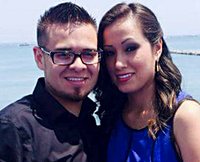 ‘A beautiful surprise’
‘A beautiful surprise’
Karina Sanchez didn’t want to use contraceptives.
“I wanted to use natural family planning, first for my relationship with God, and also because of the damage that contraceptives can do to me,” she explained.
Her husband, Cero Sanchez, agreed, and the couple started their marriage using the Billings Ovulation Method three years ago. Six months later, they had a surprise: Karina was pregnant.
“Our daughter wasn’t ‘planned,’” Karina said, making air quotations with her fingers, “but she was a beautiful surprise.”
Having their daughter also brought them closer together.
After her birth, they decided to learn the sympto-thermal method through the Couple to Couple League. Karina, 29, appreciates the teamwork that they learned through this method, where the husband is encouraged to participate in the daily tracking of his wife’s fertility. Every morning, Cero, 27, takes Karina’s basal body temperature — a person’s lowest daily body temperature — and he records her observations of her body that she reports to him in the evening.
Cero admits that, in the beginning, understanding the method seemed complicated and confusing, but now it’s just part of daily life. In fact, he learned it so well that the couple are now Couple to Couple League teachers.
“Supposedly, I’m the one who talks more,” Karina said. “But it’s really him who gives the majority of the class. I’m really proud my husband can teach this.”
Parishioners of St. Raphael in Crystal, the Sanchezes teach in their native Spanish, and they focus on the St. Cloud area, where there are no other NFP classes available in Spanish.
Now the parents of a 9-month-old and a 3-year-old, they also believe that natural family planning was a good preparation for parenting because it helped them learn to pay attention to each other, they said.
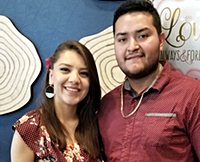 A husband’s change of heart
A husband’s change of heart
Three things happened the year Angelica Campuzo-Rojo-Clemente turned 23. She started a new job at a call center that, ironically, did intakes for a class action lawsuit against the Mirena Intrauterine Device. She also went on a retreat that led to a conversion of heart and the removal of her own Mirena IUD. Finally, at the same call center, she met her husband, Jonathan Clemente Torres. It all culminated in the couple, parishioners at Epiphany in Coon Rapids, starting their marriage three years ago with Angelica staunchly leading them in using natural family planning.
“In the beginning it was hard, but I have my weapons — prayer,” Angelica said.
Angelica taught herself the Billings Ovulation Method through YouTube, but despite their intentions to initially avoid pregnancy, they were soon expecting their first child. Four months after their daughter’s birth, she was pregnant again. The couple also struggled in their marriage: Jonathan resented quickly having two children, and Angelica took her own stress out on him. Then a friend suggested they take a class on the sympto-thermal method of NFP through the Couple to Couple League.
At the class, the instructor offered them the opportunity not only to learn it for themselves but also to become teachers. Angelica loved the idea, and a reluctant Jonathan went along with it. Angelica could tell he was disengaged, though, and when she needed to stay home with a sick child on the second night of class, she started to think that it wasn’t the right time for her to get involved in teaching NFP. To her surprise, Jonathan decided to go to class without her.
“I was mad, but then all of a sudden I was driving to class,” he said.
He can’t say exactly what impelled him to go that evening, but his attitude started to change. He became an exemplary student and even surpassed his wife in knowledge of the method. That winter he also took over child care when he was laid off from his construction job for several weeks. Spending all day with his children and watching them play together, he realized what a gift the brother and sister were to each other — and to him. He stopped regretting not being able to travel or have a nicer car because of having children.
“Those things are material. You do them and they’re gone,” he said. “Kids are part of you.”
Using the sympto-thermal method also helped their marriage. The Couple to Couple League teaches couples to work together to track fertility. One of the husband’s jobs is to take his wife’s basal body temperature, a fertility indicator, each morning. The small interaction smoothed over the rough patches of daily life. When Jonathan put the thermometer in Angelica’s mouth in the morning, they couldn’t help but laugh over whatever it was that they were fighting about the night before. The couple, both 27, are happily anticipating the birth of their third child in July.
 Discernment and providence
Discernment and providence
Jaqueline and Joshua Barten started off their marriage in a whirlwind of change and uncertainty. They married in 2004 just in time to move to Germany where Joshua was stationed at a military base awaiting deployment to Iraq.
“We didn’t think it was prudent to get pregnant right away,” Joshua said.
They decided to use natural family planning to avoid pregnancy. Then, as often happens in the military, plans changed. Joshua’s deployment was delayed by a year-and-a-half, though he spent most of that time away from Jaqueline traveling with his unit. It was an emotional time for the couple as they dealt with military life, their own emotions around having children, and Jaqueline’s struggle to find employment for herself.
“We definitely questioned whether we were discerning it right,” Joshua recalled.
As Joshua’s deployment finally approached, they decided they wanted to try to conceive, but their last two weeks together coincided with Jaqueline’s infertile time. They took this as a sign of God’s providence for them to wait to have children. After Joshua returned from his yearlong deployment, their hopes for a child were fulfilled right away and they soon had a daughter. Less than a year later, their second daughter was born.
Parishioners of St. Bridget of Sweden in Lindstrom, the couple undertakes a discernment process of prayer and discussion each time they consider conceiving. They have found it a powerful tool both in their married life and for being open to anything that God is asking of them. Carefully considering having another child is something they find necessary for their personalities and for their lifestyle. Practicing ecological breastfeeding and co-sleeping means their children are always with them.
“We take on a lot with our children and also with work and the community,” said Joshua, 37.
At the same time, they have learned that God’s hand is guiding them even beyond what they discern. When they had decided they were ready for a third child, they were surprised that it took six months for them to conceive, but in the end the timing of the birth of their third daughter couldn’t have been better. They now have four children, ages 10, 9, 5 and 3.
After the birth of their youngest child, they discerned for years about having a fifth. They’re now open to another child, but not yet pregnant.
Through practicing NFP, they have found themselves becoming more and more open to life, they said.
“I think sometimes we can get into a trap of, ‘Absolutely not. We’re done,’” Joshua said in regard to having more children. He now finds himself open to the possibility of more than five children.
Meanwhile, Jaqueline, 36, has started to wonder, “Why not be more open to life?” and to be less concerned about following the rules to avoid pregnancy, trusting that God is ultimately in control.
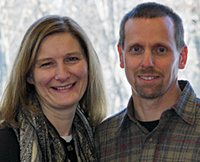 Learning to trust
Learning to trust
Had it not been for two incidents, Paulette Kostick would have gone on artificial birth control “like everyone else” when she got engaged to her now-husband of 27 years, Jim Kostick.
First, she and a friend happened to read the entire pamphlet on birth control when it fell out of her friend’s pack of pills one day, revealing the medication’s entire list of side effects. Then, one of Paulette’s physical therapy patients nearly died from a side effect of her oral contraception.
The Kosticks, now both 53, decided to use a barrier method of contraception when they married. But something didn’t feel right.
“Here I am on our wedding night thinking, ‘Something’s wrong here.’ I just gave myself to this man and there’s this barrier between us,” Paulette recalled.
Then, three months into their marriage, he suggested they stop using condoms. The idea terrified Paulette. It flashed through her mind that she could take oral contraceptives without him knowing it, but instead, she decided to trust her husband and taught herself the Billings Ovulation Method of natural family planning. It was a turning point in their marriage. However, shortly thereafter they discovered Paulette was unexpectedly pregnant.
When they moved to Pennsylvania from Utah a short time later, they found a community of other young Catholic couples who had also embraced NFP. They were also introduced to the sympto-thermal method and the Couple to Couple League.
Paulette was drawn in by the science of the sympto-thermal method and how “normal” the other Catholic families they met were. With this support, they embraced NFP as a lifestyle and started to understand the Church’s teachings on openness to life.
Parishioners at St. Paul in Ham Lake, the Kosticks now have eight children ages 9 to 26 and teach NFP with the Couple to Couple League.
Their “openness to life” has not always been easy, though.
“There was a time when after the birth of our fourth child [that] I was just so depleted. We practiced a lot of abstinence,” Paulette said.
These times showed her how committed Jim was to her and their marriage. Remaining faithful to the Church through NFP has also given them more moral authority with their children, they said. However, they have also come to dislike the term “natural family planning.”
“It makes it seem like you are in control,” Jim said.
“Now I see it more as, ‘God what is your will for me and my family?’” Paulette said. “I learned that through NFP because I had to break my own will.”
Related:


